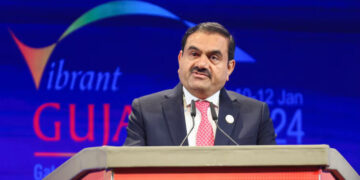Islamabad: 09 August 2023: Dubai’s resurgent tourism industry is celebrating a successful first half of 2023, after welcoming a record 8.55 million international overnight visitors, compared to 8.36 million tourists in H1 2019. Surpassing pre-pandemic visitation levels and further bolstering the city’s bid to become the world’s most visited destination, the latest data published by Dubai’s Department of Economy and Tourism (DET) represents the industry’s best ever H1 performance. The 20% YoY visitation growth contributes to the goal of the Dubai Economic Agenda 2033, launched by His Highness Sheikh Mohammed bin Rashid Al Maktoum, Vice President and Prime Minister of the UAE and Ruler of Dubai, to consolidate the emirate’s status as one of the world’s top three cities.
The record H1 performance reflects the successful and diverse city-wide drive to market the destination, with the unwavering support of stakeholders and partners, and under the guidance of Dubai’s visionary leadership. It also reaffirms Dubai’s position as the fastest recovering destination globally, and far exceeds the projection made by the United Nations World Trade Organisation that international tourist arrivals could reach between 80-95% of pre-pandemic levels this year.
His Highness Sheikh Hamdan bin Mohammed bin Rashid Al Maktoum, Crown Prince of Dubai and Chairman of The Executive Council of Dubai, said: “The remarkable surge in international visitors witnessed by Dubai in the first half of 2023 further demonstrates its emergence as one of the brightest spots not only in the worldwide tourism sector but also the broader global economic landscape. This accomplishment has been made possible by the foresight of Dubai’s leadership, whose vision and prudent polices fortified its resilience in the wake of global challenges and enabled it to rebound more swiftly than other markets. While the growth of international visitation reinforces Dubai’s rise as a major global tourism destination, it also signifies its status as a pivotal hub for trade, investment and enterprise.
“The Dubai Economic Agenda D33, spearheaded by His Highness Sheikh Mohammed bin Rashid Al Maktoum, Vice President and Prime Minister of the UAE and Ruler of Dubai, has outlined an ambitious new trajectory for
the city to further consolidate its status as one of the world’s top urban economies and tourism destinations. As a major pillar of Dubai’s economy, the tourism sector will continue to play a key role in realising its future aspirations.”
His Excellency Helal Saeed Almarri, Director General of Dubai’s Department of Economy and Tourism, commented: “This significant uplift in visitation, which surpasses both pre-pandemic levels and marks a new record for Dubai’s tourism sector, is the result of a highly coordinated, sustainable and robust strategy, that is underpinned by a strong execution mandate and driven forward by the vision and continuous support of His Highness Sheikh Mohammed bin Rashid Al Maktoum and the emirate’s entire leadership, in line with the 10 year Dubai Economic Agenda D33.
“These results further add weight to the depth, scale and resilience of Dubai’s tourism ecosystem, both domestically and across the world, all of which have been instrumental to supporting the city’s highly calibrated and agile strategy for advancing growth over the previous decade, mitigating risk and building a comprehensive framework throughout the entire value chain to drive our ambitions for the coming 10 years. It is the strength of these partnerships, and all our stakeholders, that continues to set us apart. We will continue to invest in such partnerships and all factors that drive the growth of tourism and economic sectors over the long term.”
Robust performance by key regions
In the first half of 2023, Western Europe emerged as a significant contributor to tourism arrivals, making up 20% of the total international visitation, while the GCC and MENA regions delivered a combined 28% of the regional share, demonstrating Dubai’s allure as a trusted and favoured destination for visitors from neighbouring markets. South Asia held a 17% share of the total visitation, and Russia, CIS, and Eastern Europe combined contributed 14%. North Asia and South East Asia contributed 8%, while the Americas, Africa and Australasia contributed 7%, 4% and 2%, respectively.















